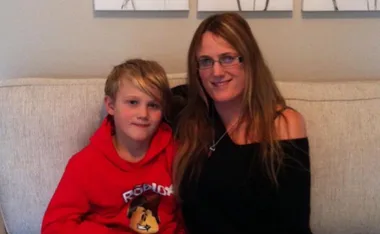Question
When I buy Asian ingredients, I always end up with some left over chillies or too many kaffir lime leaves. What can I do with them other than throw them away?
Answer
Here are some good ways to use up your asian ingredients:
Green curry paste
Quick ideas:
Mix a small amount of curry paste and mayonnaise together for a sandwich spread or crudités dip.
For a spicy dumpling filling, blend some paste with minced pork or add to beef mince to make spicy burgers.
For a quick soup, add a little paste to good chicken stock, some rice noodles and Asian greens.
Storage solutions:
For ready to use small portions, freeze in an ice cube tray.
Spoon dollops of paste on a paper-lined tray and freeze until solid. Remove from tray and place into a freezer bag.
Hot chilli sauce
Quick ideas:
Goes well with any grilled meat and vegetables.
Stir into sour cream to make a quick sauce for potato wedges or chips.
Mix a little with lime juice, fish sauce and palm sugar to make a quick Asian dipping sauce you can use with fish cakes. Serve with rice or steamed greens.
Storage Solutions:
Even after opening, this will keep for months without refrigeration.
Kaffir lime leaf
Quick ideas:
Add some lime leaves to stock or broth to give a lime flavour.
Finely shred lime leaves and add to stir-fries or as garnish to soups.
Infuse a bottle of vinegar with lime leaves to add a wonderful taste to salads or use them to infuse a lime flavour into a pot of tea.
Storage solutions:
Kaffir lime leaves can be stored in snap-lock bags in the freezer and will keep indefinitely in this state. Leaves can also be dried.
Lemongrass
Quick ideas:
Add a bruised lemongrass stick to sugar syrup and drizzle syrup over tropical fruit.
Can be used as a skewer for beef, lamb, chicken or seafood.
Use it finely chopped in marinades and to impart flavour in pickles.
Storage solutions:
Lemongrass will keep for weeks in the refrigerator if kept in a plastic bag or frozen for up to 6 months if well wrapped.
Dried shiitake mushrooms
Quick ideas:
Throw some dried shiitake mushrooms into a casserole.
Chop and add to a vegetable burger mixture.
Grind mushrooms in a coffee grinder and add to dishes where you don’t want to add the actual dried mushroom to give a great mushroom flavour.
Storage solutions:
Store in an air-tight container for 10 to 12 months.
Ginger
Quick ideas:
Add to coffee or tea as an infusion.
Shred old ginger and preserve it in oil. Use the oil for stir fries or curries.
Add a little finely grated ginger to cookie dough or cake batter.
Storage solutions:
Fresh ginger keeps best in a paper bag for a few weeks. After that, divide ginger into knobs and drop into a bottle filled with sherry vinegar. Refrigerate.
Star anise
Quick ideas:
Grind and add to a smoking mixture when smoking fish or meat.
Infuse with lemongrass or kaffir lime leaves in sugar syrup.
Break up and use to stud a baked ham at Christmas time.
Add to broth, stock or tea as an infusion.
Storage solutions:
Store in an air-tight container for 10-12 months.
Tamarind concentrate
Quick ideas:
Add to curries and stir fries or use as part of a marinade.
Add a little to the liquid when making fruit preserves or chutneys.
Mix with sparkling water and sugar to make a quick refreshing drink.
Storage solutions:
Freeze the strained liquid in ice cube trays. You can also freeze the concentrate you buy in Asian stores.
Pics: Rodney Macuja/ bauersyndication.com.au






































.png?resize=380%2C285)
.jpg?resize=380%2C285)























